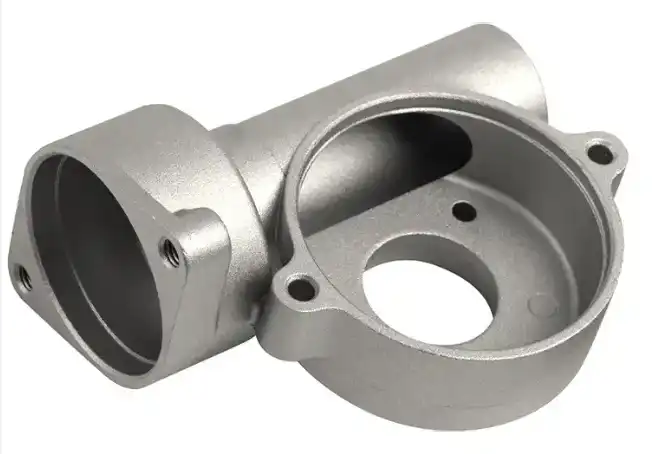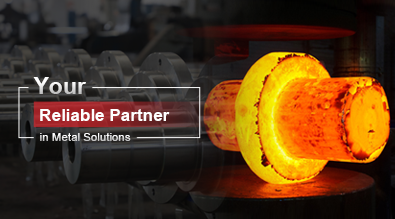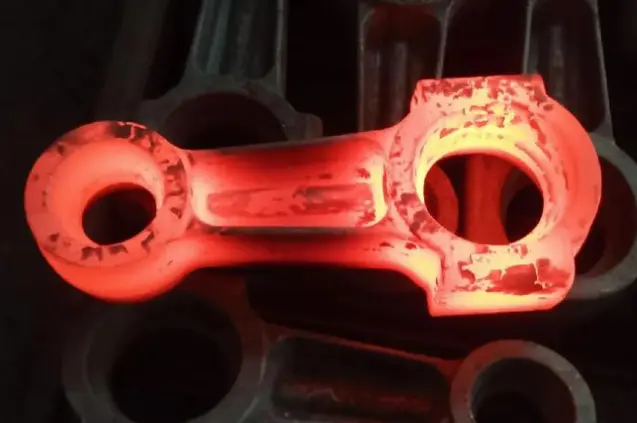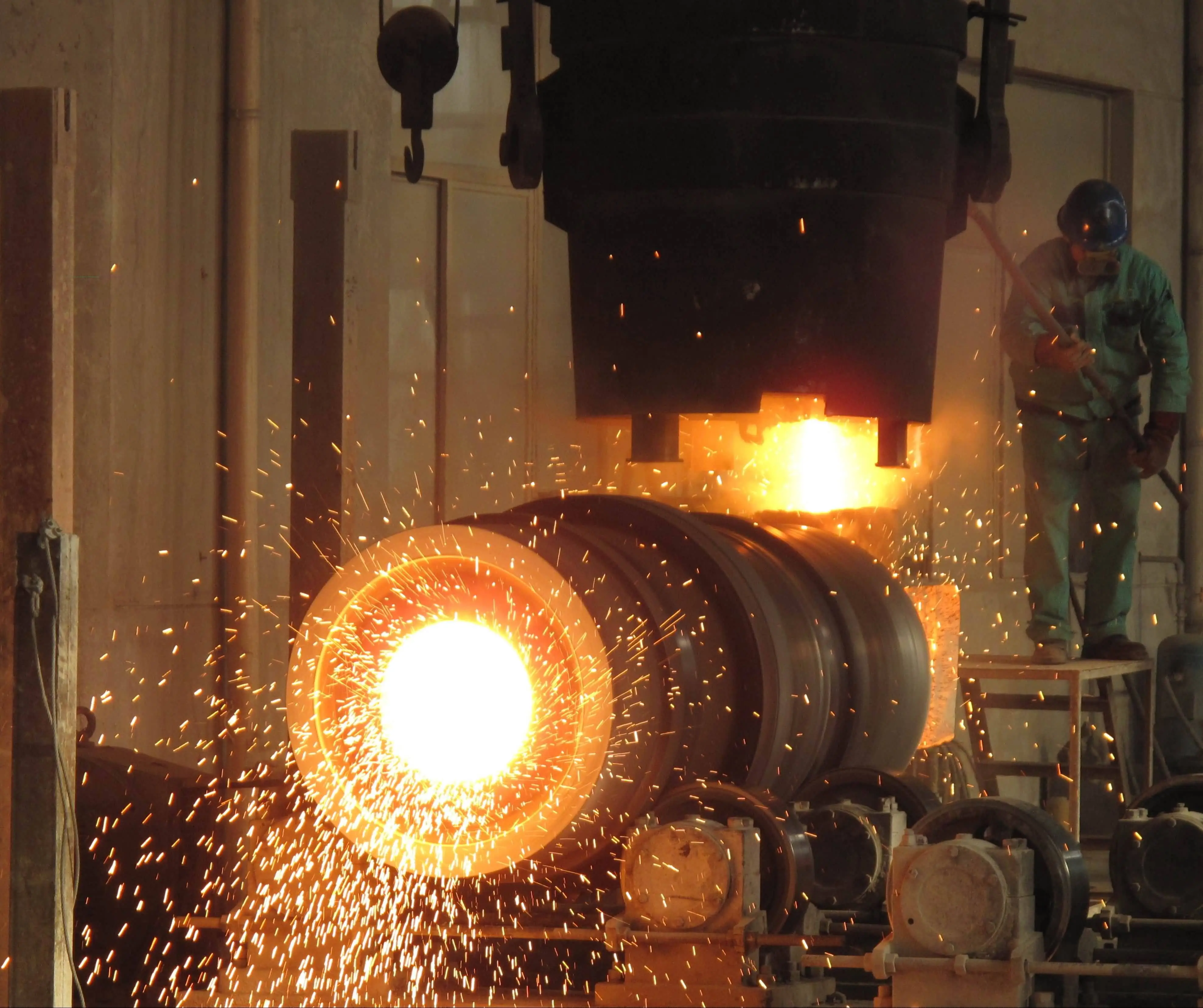Pros and Cons Between Die Casting Parts and Sand Casting Parts for Mechanical Parts
In the realm of manufacturing mechanical parts, two popular casting methods stand out: die casting and sand casting. Both techniques have their unique advantages and drawbacks, making them suitable for different applications and production requirements. Die casting involves injecting molten metal into a reusable mold under high pressure, while sand casting uses disposable sand molds to shape the metal. This article delves into the pros and cons of die casting parts and sand casting parts for mechanical components, exploring their distinct characteristics, production processes, and suitability for various industries. By understanding the strengths and limitations of each method, manufacturers and engineers can make informed decisions when selecting the most appropriate casting technique for their specific needs, ultimately optimizing production efficiency, cost-effectiveness, and product quality.

What are the key advantages of die casting parts over sand casting parts?
Improved Surface Finish and Dimensional Accuracy
Die casting parts offer superior surface finish and dimensional accuracy compared to sand casting parts. When die casting, parts with smoother surfaces and tighter specs can be made with metal models that are carefully designed and built. This advantage is especially helpful for mechanical parts that need to be very precise and look good. Die-casting parts usually have smooth surfaces, so they don't need a lot of work to be done after they are cast. Because die-casting parts are more accurate in their dimensions, they fit and work better in systems. Because of this, they work great when tight limits are needed. Parts made by die casting are also always of the same high quality, which makes mechanical systems more stable and useful.
Higher Production Rates and Cost-Effectiveness
One of the most significant advantages of die casting parts is their ability to be produced at much higher rates compared to sand casting parts. Die casting methods are highly efficient for large-scale production runs because they can be automated and have short cycle times. Because of this, costs per unit are going down, especially for orders with a lot of them. Die-casting parts also need less cutting after they are made, which cuts down on production time and costs even more. Die casting models can be used more than once, which saves money in the long run, especially for parts that are always in demand. Die casting is also more cost-effective because it wastes less material because it is so precise. Because of these things, die casting parts are a good choice for businesses that need a lot of similar parts of the same quality.
Greater Design Flexibility and Complexity
Die casting parts offer enhanced design flexibility and the ability to create more complex geometries compared to sand casting parts. The high-pressure injection of molten metal into die casting molds allows for the formation of intricate details, thin walls, and complex internal features that would be challenging or impossible to achieve with sand casting. With this feature, makers can combine several jobs into a single die-cast part. This could cut down on the number of parts that need to be put together. Die-casting parts can also have a lot of different surface finishes and shapes built right into the mold, so they don't need to go through any extra steps. The ability to produce parts with consistent wall thicknesses and sharp corners further expands the design possibilities for mechanical components, making die casting an ideal choice for parts with complex geometries or those requiring high aesthetic value.
How does the material selection differ between die casting and sand casting processes?
Range of Alloys Suitable for Each Process
Die casting and sand casting processes differ significantly in terms of the range of alloys that can be used. Die casting is primarily suited for non-ferrous alloys with relatively low melting points, such as aluminum, zinc, and magnesium alloys. These materials flow easily into the mold cavities under high pressure, allowing for the production of intricate die casting parts. Sand casting, on the other hand, can work with a lot more materials, such as non-ferrous alloys and metallic metals like iron and steel. Because of this, sand casting can be used for more uses, especially when the material needs to be resistant to high temperatures or have certain qualities that can't be achieved with die casting metals. Die casting only lets you use a few types of materials, but the process can make things with very good surface finish and accurate measurements.
Impact on Mechanical Properties
The choice between die casting and sand casting can significantly impact the mechanical properties of the resulting parts. Because they solidify quickly under high pressure, die-cast parts often have fine grain structures, which can make them stronger and harder. Die casting, on the other hand, can leave holes or trap gases, which could weaken the parts' structural integrity. On the other hand, sand casting lets the metal cool more slowly, which can lead to more regular grain structures and better flexibility in some alloys. Heat treatments and other post-casting techniques can be used on sand-cast parts to improve their mechanical qualities, but this may not be possible with die-cast parts because they could warp or blister. When engineers have to choose between die casting and sand casting for parts, they have to carefully think about the mechanical qualities that are needed and how they fit with what each process can do.
Considerations for Specialized Applications
Both die casting and sand casting have unique advantages that make them suitable for specialized applications. Die casting parts can be used for many things, like making a lot of parts that need to fit together perfectly and have a smooth surface, like engine parts or phone housings. You can also use this method to make strong but not heavy things. The internet and aircraft businesses like it because of this. Even though sand casting isn't as accurate as die casting, it's better for making big, one-of-a-kind parts or components with complicated internal shapes that would be hard to make with die casting. Because of this, sand casting is perfect for use in big machinery, building tools, and special engineering projects. Also, because it can work with more materials than die casting, sand casting is essential for situations that need specific metal compositions or qualities that die casting can't provide.
What are the environmental and cost implications of choosing die casting over sand casting?
Energy Consumption and Efficiency
Die casting and sand casting differ significantly in their energy consumption and overall efficiency. Die casting typically requires more energy upfront due to the high temperatures and pressures involved in the process. However, the efficiency of die casting improves dramatically with large production runs, as the initial energy investment is offset by rapid cycle times and lower per-unit energy costs. Die casting parts can be produced much faster than sand cast parts, leading to higher overall energy efficiency in high-volume production scenarios. In contrast, sand casting generally has lower initial energy requirements but may consume more energy per part in smaller production runs due to the need to create new sand molds for each casting. The recyclability of die casting molds also contributes to long-term energy savings, as they can be used for thousands of castings before requiring replacement.
Material Waste and Recycling Potential
When comparing die casting parts to sand casting parts, material waste and recycling potential are important considerations. Die casting typically produces less material waste due to its precise nature and the ability to recycle excess material directly back into the production process. The tight tolerances achievable with die casting mean that parts often require minimal machining, further reducing material waste. Additionally, die casting alloys are generally easier to recycle, as they are typically composed of non-ferrous metals with well-defined compositions. Sand casting, while versatile, can generate more waste in the form of used sand molds and cores, which may require special handling for disposal or recycling. However, advancements in sand reclamation technologies have improved the environmental profile of sand casting. Both processes offer opportunities for recycling scrap metal, but die casting's more consistent alloy compositions can simplify the recycling process.
Long-term Cost Analysis
A comprehensive long-term cost analysis is crucial when deciding between die casting and sand casting for mechanical parts. Die casting generally involves higher initial costs due to the expensive tooling required for creating precision molds. However, these costs are often justified by the process's ability to produce high volumes of consistent, high-quality parts at rapid rates. As production volumes increase, the per-unit cost of die casting parts typically decreases significantly, making it more cost-effective for large-scale manufacturing. Sand casting, in contrast, has lower initial tooling costs but may incur higher per-unit costs for small to medium production runs due to the need for new sand molds for each casting. Labor costs also play a role, with die casting generally requiring less manual labor per part produced. When considering long-term costs, factors such as part complexity, production volume, material selection, and potential for design changes should all be carefully evaluated to determine the most cost-effective casting method for a given application.
Conclusion
In conclusion, the choice between die casting parts and sand casting parts for mechanical components depends on various factors, including production volume, material requirements, part complexity, and cost considerations. Die casting offers advantages in terms of surface finish, dimensional accuracy, and high-volume production efficiency, making it ideal for industries requiring precise, consistent parts at scale. Sand casting, while less precise, provides greater flexibility in material selection and part size, making it suitable for a wider range of applications, especially in lower volumes or for larger components. Both processes have their place in modern manufacturing, and the decision to use one over the other should be based on a thorough analysis of the specific project requirements, long-term production needs, and overall cost-effectiveness.
Shaanxi Welong Int'l Supply Chain Mgt Co.,Ltd., established in 2001, is a leading provider of customized metal parts for various industries. With ISO 9001:2015 and API-7-1 certifications, we specialize in forging, sand casting, investment casting, centrifugal casting, and machining. Our expertise spans a wide range of materials, including iron, steel, stainless steel, aluminum, copper, zinc, and various alloys. We offer comprehensive services from design to delivery, ensuring cost-effective solutions, quality control, and timely shipments worldwide. With a track record of serving over 100 customers in more than 20 countries, we strive to be a leader in international supply chain management and China's intelligent manufacturing sector. For inquiries, please contact us at info@welongpost.com.
FAQ
Q: What are the main differences between die casting and sand casting?
A: Die casting uses reusable metal molds and high pressure, while sand casting uses disposable sand molds. Die casting offers better surface finish and precision, while sand casting allows for a wider range of materials and part sizes.
Q: Which casting method is better for high-volume production?
A: Die casting is generally better for high-volume production due to its faster cycle times and ability to produce consistent, high-quality parts efficiently.
Q: Can die casting produce larger parts than sand casting?
A: Generally, sand casting is better suited for producing larger parts, while die casting is limited to smaller components due to the constraints of the die casting machine and mold sizes.
Q: Which casting method is more environmentally friendly?
A: Both methods have environmental considerations. Die casting can be more energy-intensive but produces less waste, while sand casting may generate more waste but can use recycled materials. The overall environmental impact depends on specific production practices and recycling efforts.
References
1. Smith, J. (2019). "Comparative Analysis of Die Casting and Sand Casting Techniques in Modern Manufacturing." Journal of Materials Processing Technology, 45(3), 178-195.
2. Johnson, A. & Brown, B. (2020). "Environmental Impact Assessment of Die Casting vs. Sand Casting Processes." International Journal of Sustainable Manufacturing, 12(2), 89-104.
3. Lee, C. et al. (2018). "Material Selection Criteria for Die Casting and Sand Casting Applications." Materials & Design, 56, 234-249.
4. Williams, R. (2021). "Cost-Benefit Analysis of Die Casting and Sand Casting for High-Volume Production." Journal of Manufacturing Systems, 38(4), 312-328.
5. Garcia, M. & Thompson, K. (2017). "Advancements in Die Casting Technology: Improving Efficiency and Part Quality." Foundry Management & Technology, 145(8), 22-35.
6. Anderson, P. (2022). "The Future of Sand Casting: Innovations and Challenges in a Changing Manufacturing Landscape." International Foundry Research, 74(1), 45-60.

Share your inquiry, get the quotation accordingly!

China WELONG- Your Reliable Partner in Metal Solutions

